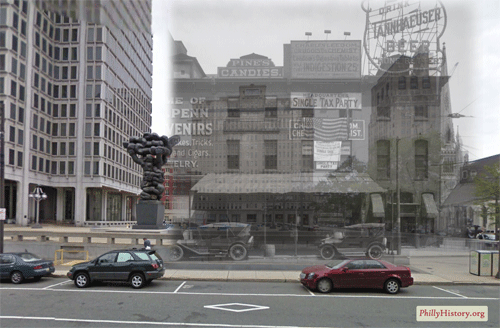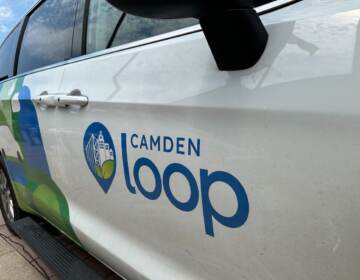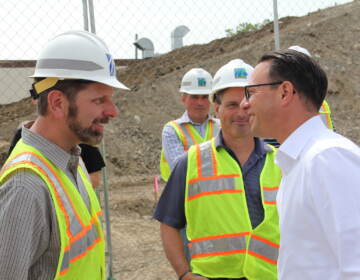PhillyHistory.org meets the 21st Century

The Philadelphia Department of Records recently won an NEH Digital Humanities Start-Up Grant to research augmented reality (AR) technology and create a smartphone prototype that will enable users, via their smartphones, to view historic photographs from PhillyHistory.org as overlays on the current landscape. If the research proved successful, users would be able to point their smartphones, using the camera view, at a building or other location and see historic images of that same location. The photos would be accompanied by descriptive information from PhillyHistory.org with additional explanatory text provided by local historians. This combination of technology and history could be a powerful tool for showing the lengthy and interesting history of Philadelphia.
But how to make it happen? Intended to fund research into innovative uses of technology in the humanities, a Digital Humanities Start-Up Grant was a great way for the Department of Records to experiment with augmented reality. Would AR be a useful method for showing the history of Philadelphia and enabling users to see the connections between the past and the present? Is AR technology advanced enough to make this type of application possible? Can the historic images really be represented as overlays (i.e. 3-D objects pinned in space)? Would the screen size of a mobile device be too small to properly display an image and text? Are smartphone networks fast enough to load all this information? Would the phone be able to pinpoint a user’s location accurately enough to load images of that location even in a crowded urban setting where GPS coordinates can be incorrect? Would this work? If we build it, will anyone actually use it?
The grant gave the Department of Records and Azavea a chance to discover the answers to these and other questions while making use of the wealth of resources available on PhillyHistory.org. The website currently features over 93,000 historic images and maps from five Philadelphia organizations, giving us plenty of materials to use in the project. We’re excited to be working with the Department of Records on this project and are learning much about iPhones, Android phones, Layar, gyroscopes, and everything else involved with mobile augmented reality technology. Our research findings will be published in a whitepaper to be available for free download later this spring.
While the grant only called for research into a prototype, we believe that we will be able to release an application for public use. The completed Augmented Reality by PhillyHistory.org application will be available at no cost for both iPhone and phones running the Android platform.
While the application is still in development, we’re hoping to have it ready for release in the next couple months. Until then, visit Azavea Labs to read more about the development process or Azavea Atlas to learn about other augmented reality projects in museums around the world.
Article originally posted on azavea.com by Deb Boyer
WHYY is your source for fact-based, in-depth journalism and information. As a nonprofit organization, we rely on financial support from readers like you. Please give today.






